Atelier Internal Workflow Platform
2024
Role
Lead Product Designer & Project Manager
Responsibilities
End-to-end design and rollout (change management) for operational workflow platform
Key Outcomes
• Created a single source of truth for business data - no more scattered information
• Reduced workflow tools by 50%
• Eliminated repetitive admin work through smart API integrations
• Built infrastructure that could handle growth as the company scaled
Migrate Mate
UX Audit: Building trust and reducing friction for international job seekers
Streamlining fragmented workflows: Enabling data-driven decisions through operational design
Atelier is a rapidly-growing manufacturing startup in the beauty, health and wellness industry. Manual internal processes were preventing data collection essential for decisions, customer insights, and operational scaling.
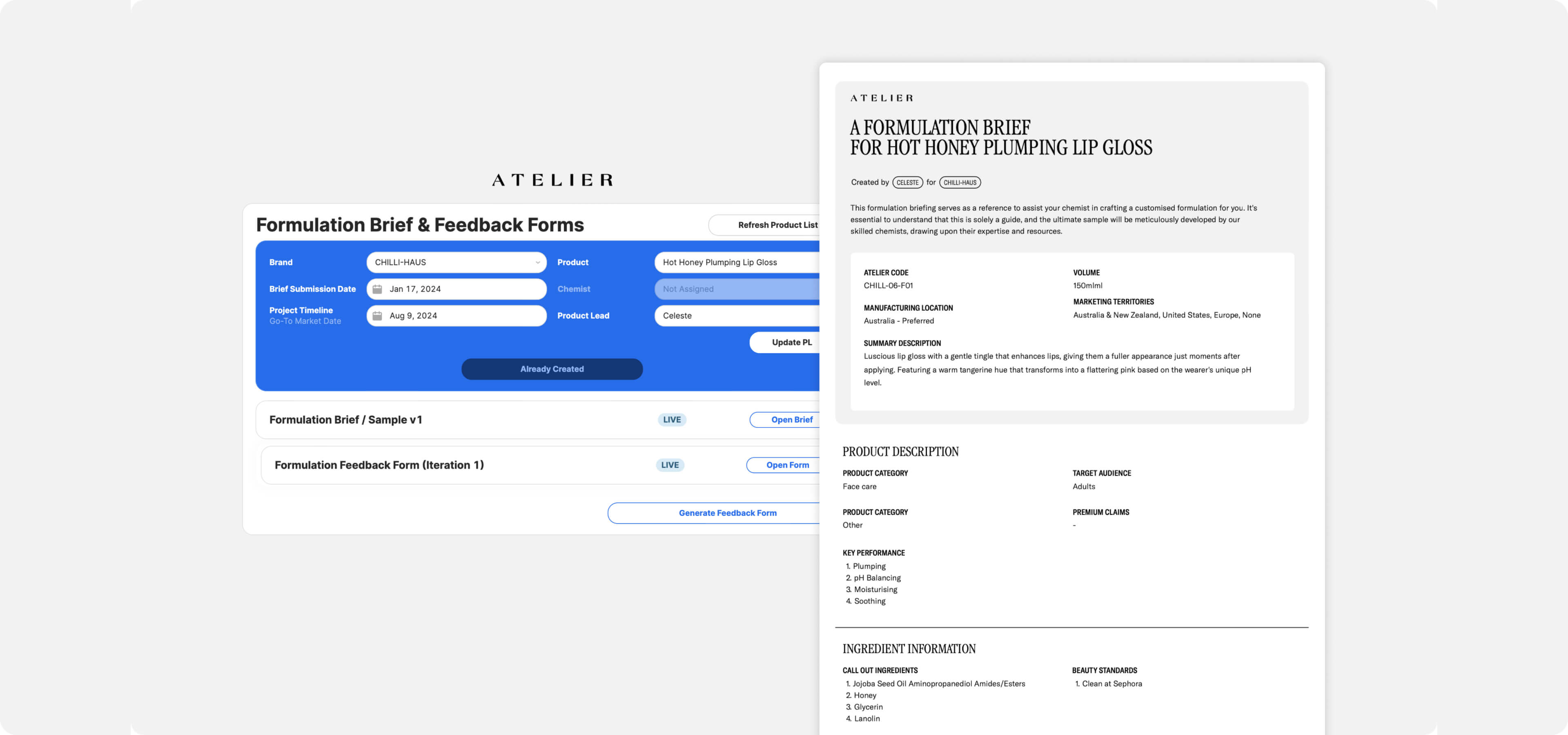
.jpg)
(01)
Project Overview
Designed and implemented a digital system to replace fragmented manual processes through automated workflows.
Simultaneously establishing the company's first operational database.
Business Context
The business scaled rapidly and manual workflows couldn't keep up. This led to delays in decision-making and blocking access to important customer data.
Project Scope
4-month end-to-end design affecting multiple internal teams and executive leadership (20+ daily users).
Technical Integration
Built on Retool, operational database (AWS), Slack API and Monday.com API
My Role
Lead Product Designer and Project Manager. I owned end-to-end design and rollout - from discovery through to implementation and change management.
I led stakeholder interviews and workflow mapping, created alignment between leadership and technical teams, and designed the interface whilst coordinating on API integrations.
I also managed rollout through SOPs, training and support channels.
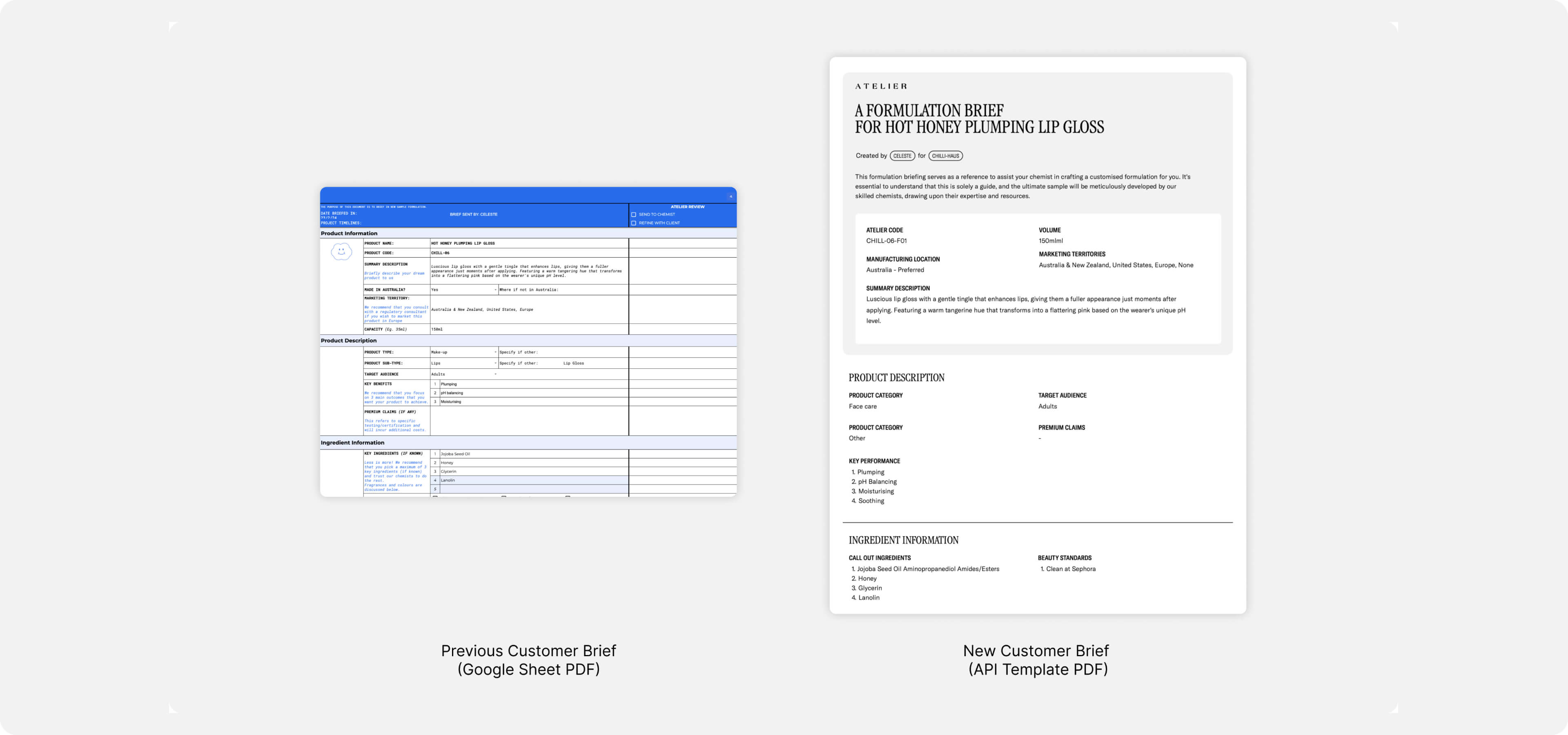
(02)
Current State Analysis
Zero visibility into business performance
Missing key insights into pricing, customers, and supply chain to help inform leadership for strategic and growth decisions
Fragmented 4-tool workflow
Teams switched between Google Sheets, Slack, Monday, and email which created context loss and made project management difficult
Teams were stuck doing repetitive admin instead of strategic work
Duplicate briefs with almost 70% identical information had to be filled out separately each time
The workflow couldn't scale
The process, had unclear terminology and no data validation which caused bottlenecks that was getting worse as the business grew
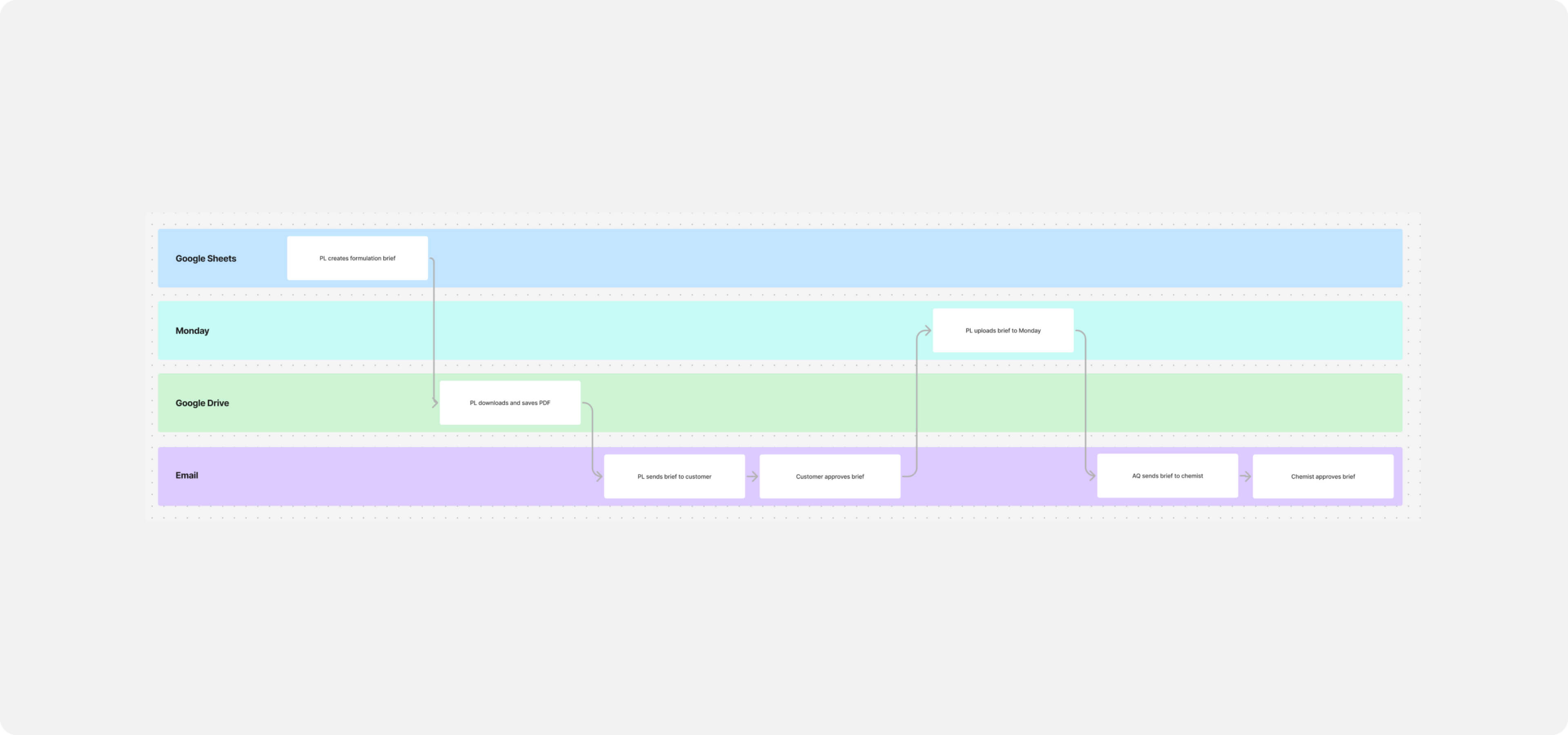
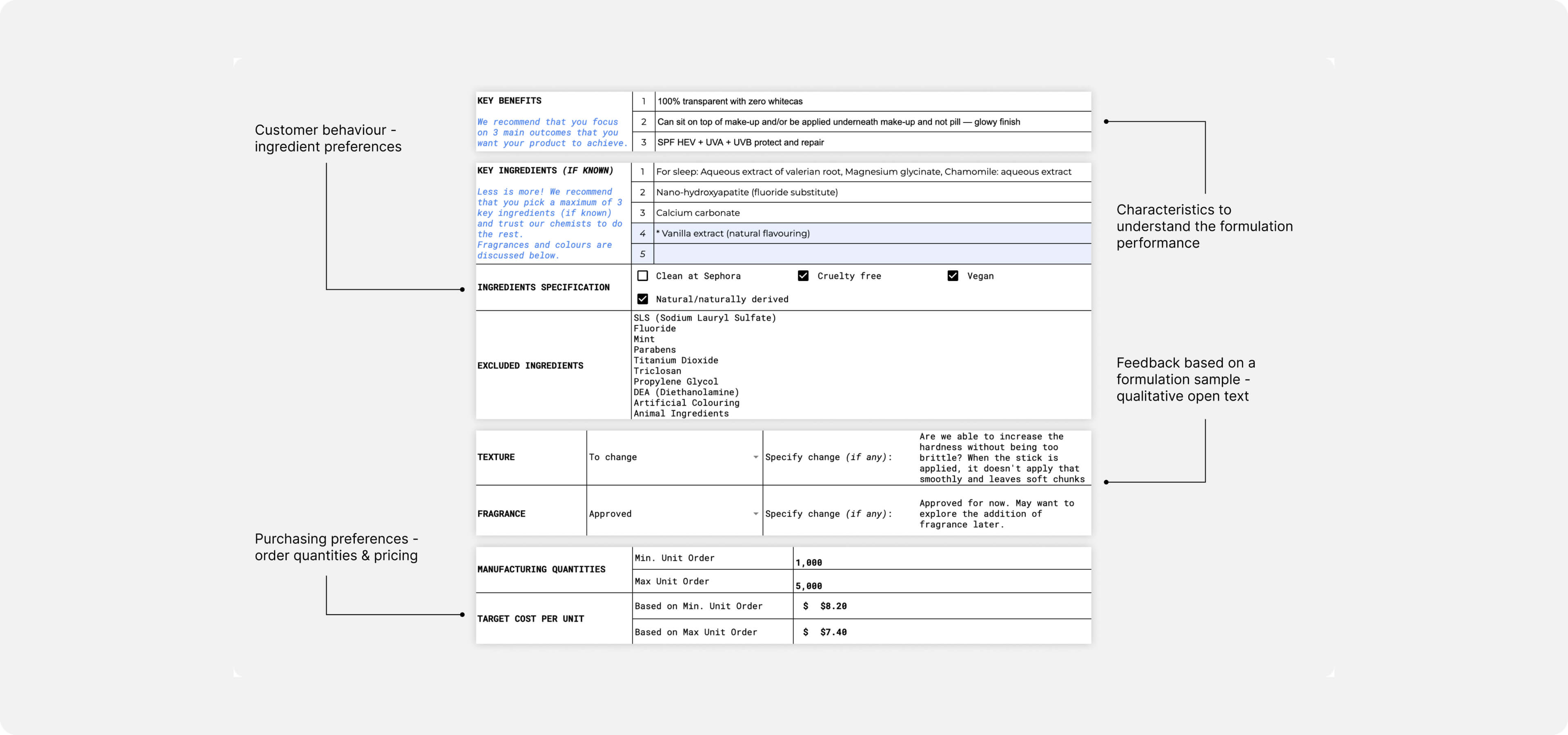
(03)
Discovery & Stakeholder Alignment
Research Approach
• Conducted user interviews and focus groups with affected internal teams to map current workflows
• Analysed previous 2 months brief data to identify information architecture patterns and inefficiencies
• Created multiple process map iterations polished through stakeholder feedback rounds
Requirements Definition
• Translated business needs into user stories defining functional and non-functional requirements
• Facilitated stakeholder review sessions and sign-off before solution development
• Mapped integration touchpoints with existing database and third-party tools
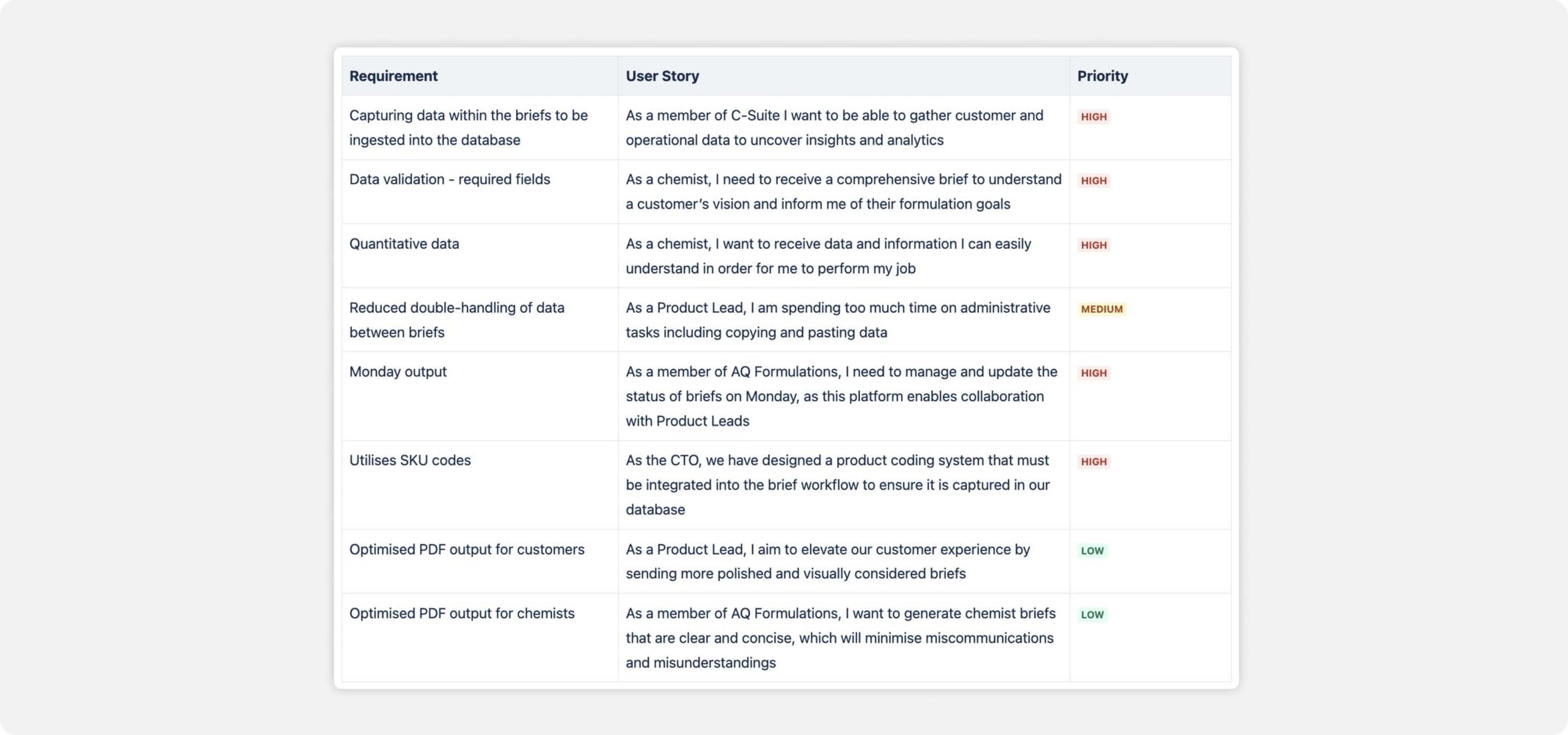
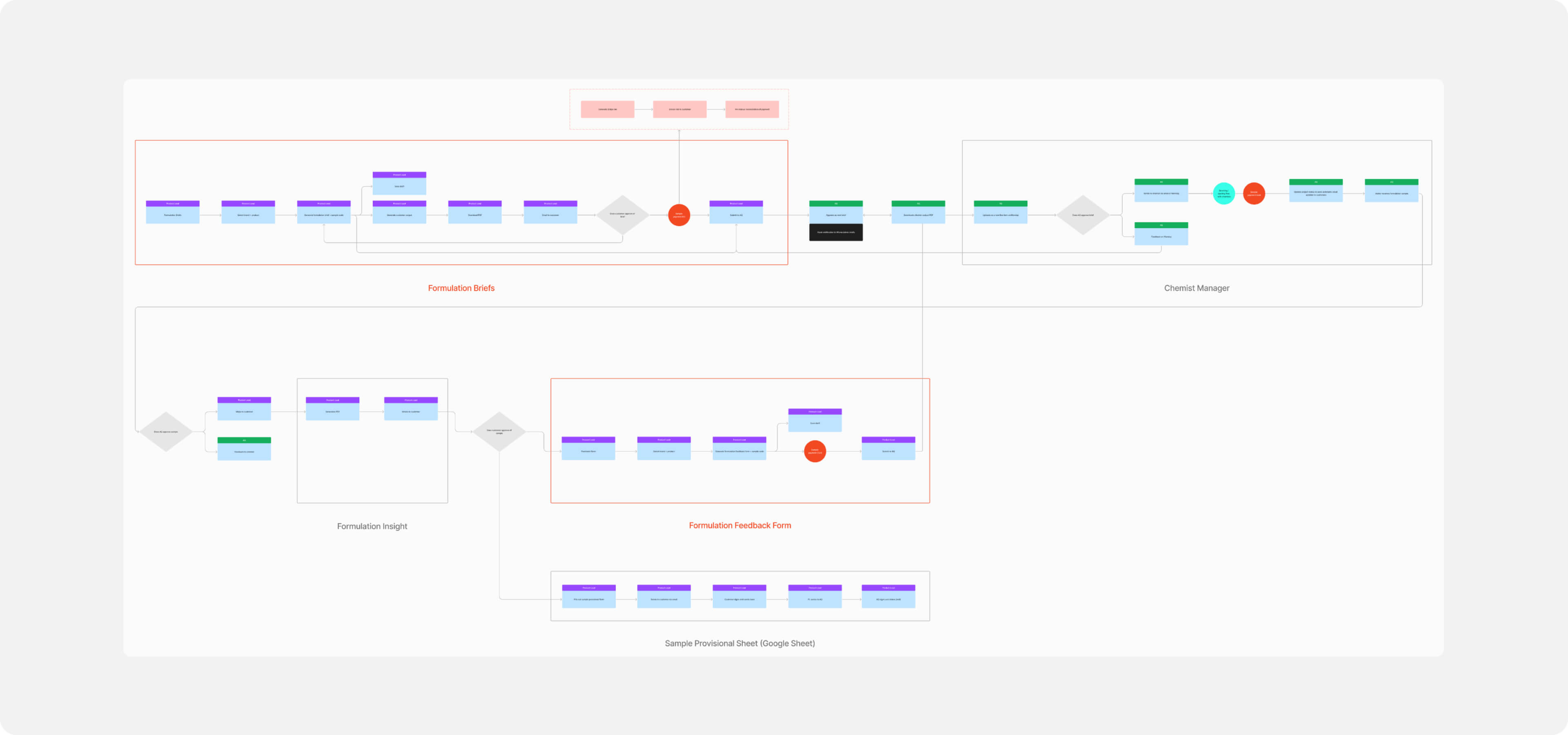
(04)
Solution Design & Trade-offs
Prioritised immediate adoption through familiar interfaces and user patterns whilst building the foundation for future optimisation
Trade-off #1: Familiar UX vs optimised workflow
Mimicked existing Google Sheets information architecture for initial launch
Rationale
Reduced change management friction to ensure adoption while planning workflow optimisation for v2
Trade-off #2: Full automation vs quick delivery
Built MVP with core automations, planning optimised features for future iterations
Rationale
The business needed immediate data capture capability. We could then use it as a foundation to iterate off
Trade-off #3: Custom platform vs low-code solution
We chose Retool for it's custom UI features and API integrations
Rationale
Balanced development speed with customisation needs and future scalability requirements
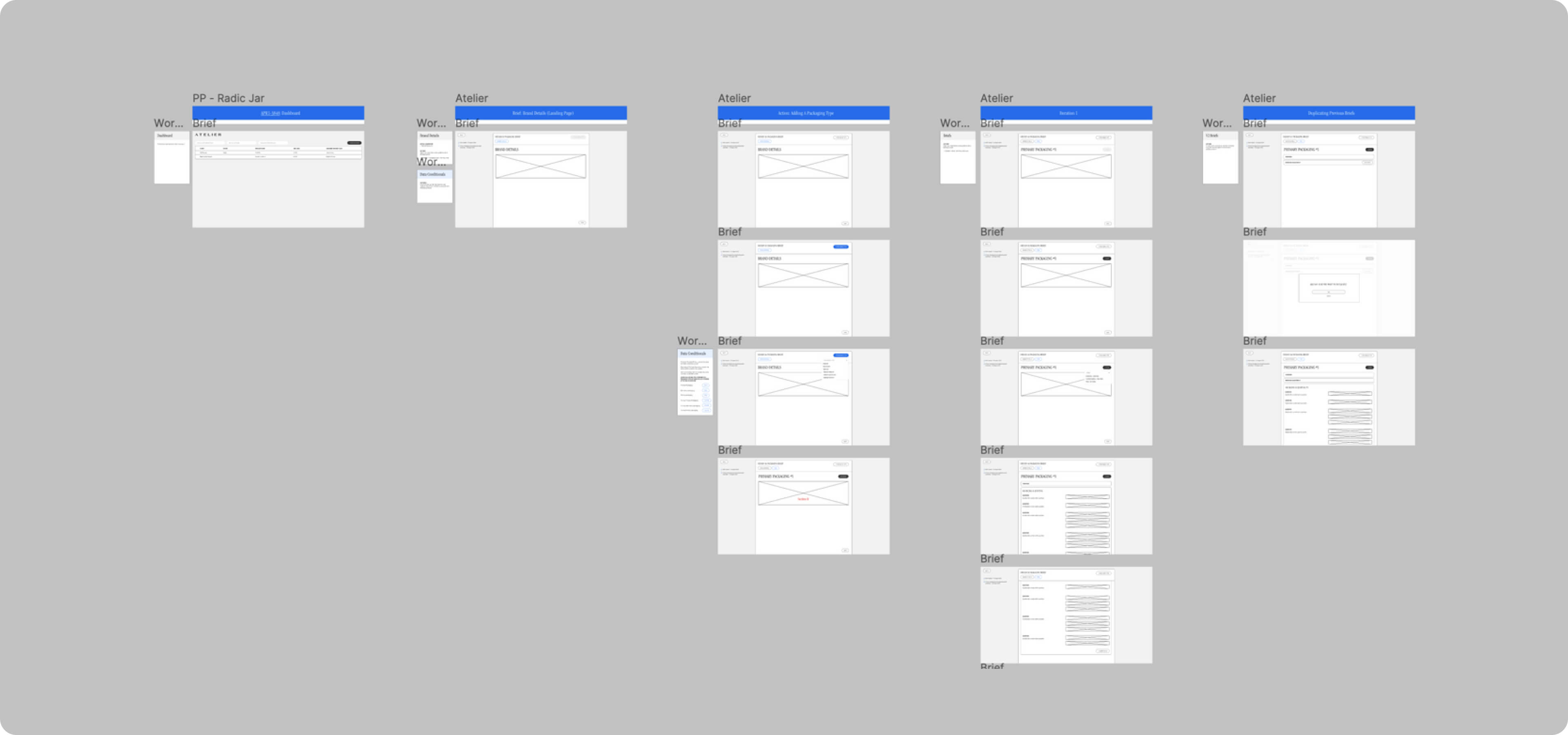
(05)
Implementation & Change Management
Technical Implementation
Coordinated with data architects to design API systems to bridge the database and frontend, as well as automated integrations with Slack and Monday.com
User Experience Design
Created simple dropdown navigation to replace open text fields, with structured data validation and automated brief generation capabilities
Change Management Strategy
Developed rollout plan using documentation, small-group workshops, and dedicated Slack support channel (#support-formulation-briefs) for ongoing feedback
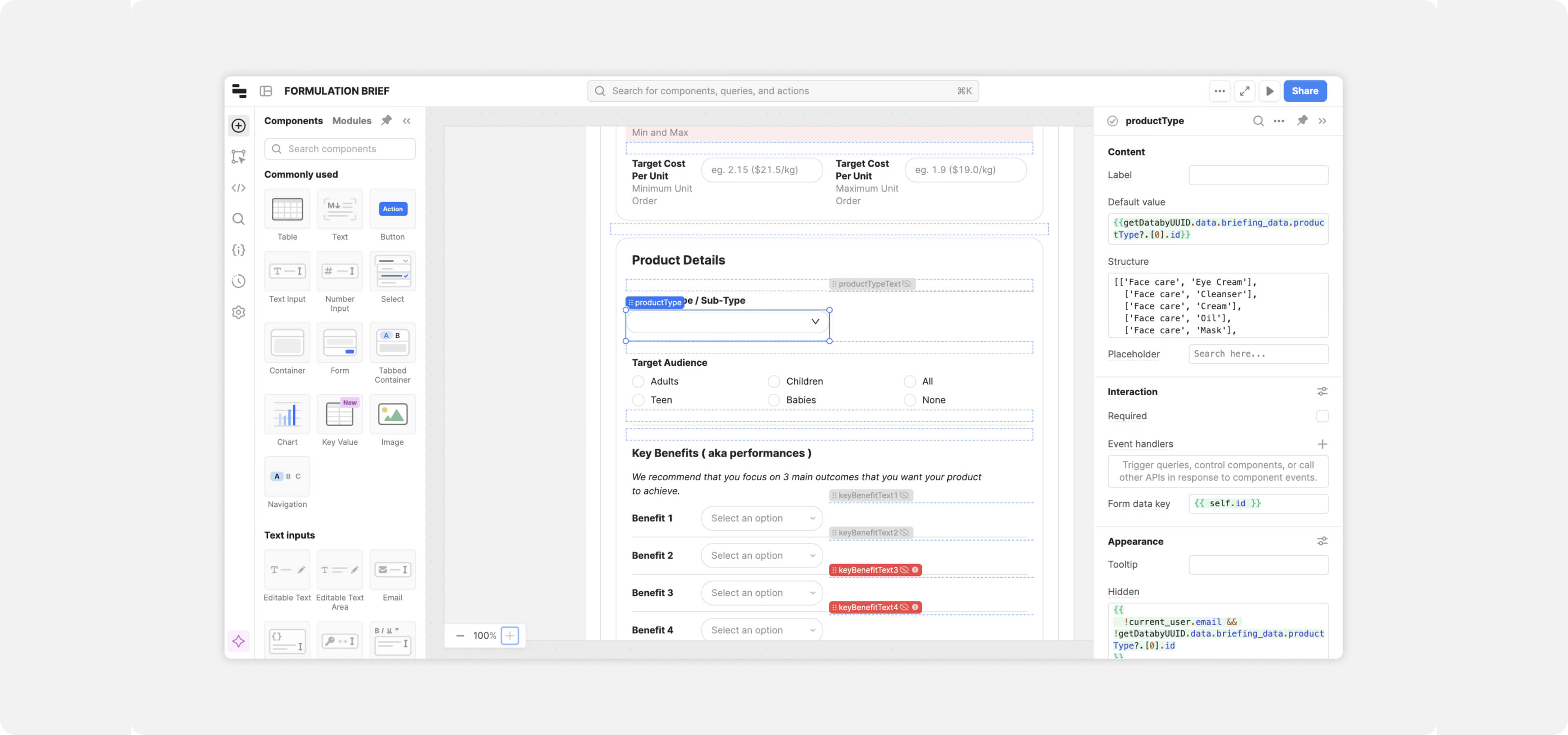
(06)
Lessons for Design in Operations
Understand before designing
Invest time upfront in stakeholder interviews and process mapping - it helps with buy-in and uncovers critical requirements that shape technical decisions.
Don't skip the people part
Focus on change management from day one - create proper training plans and track adoption metrics instead of assuming people will just figure it out despite a similar UX.
The bigger picture
This project showed how strategic design doesn't just improve user experience - it can unlock insights to make smart business decisions and scale better.
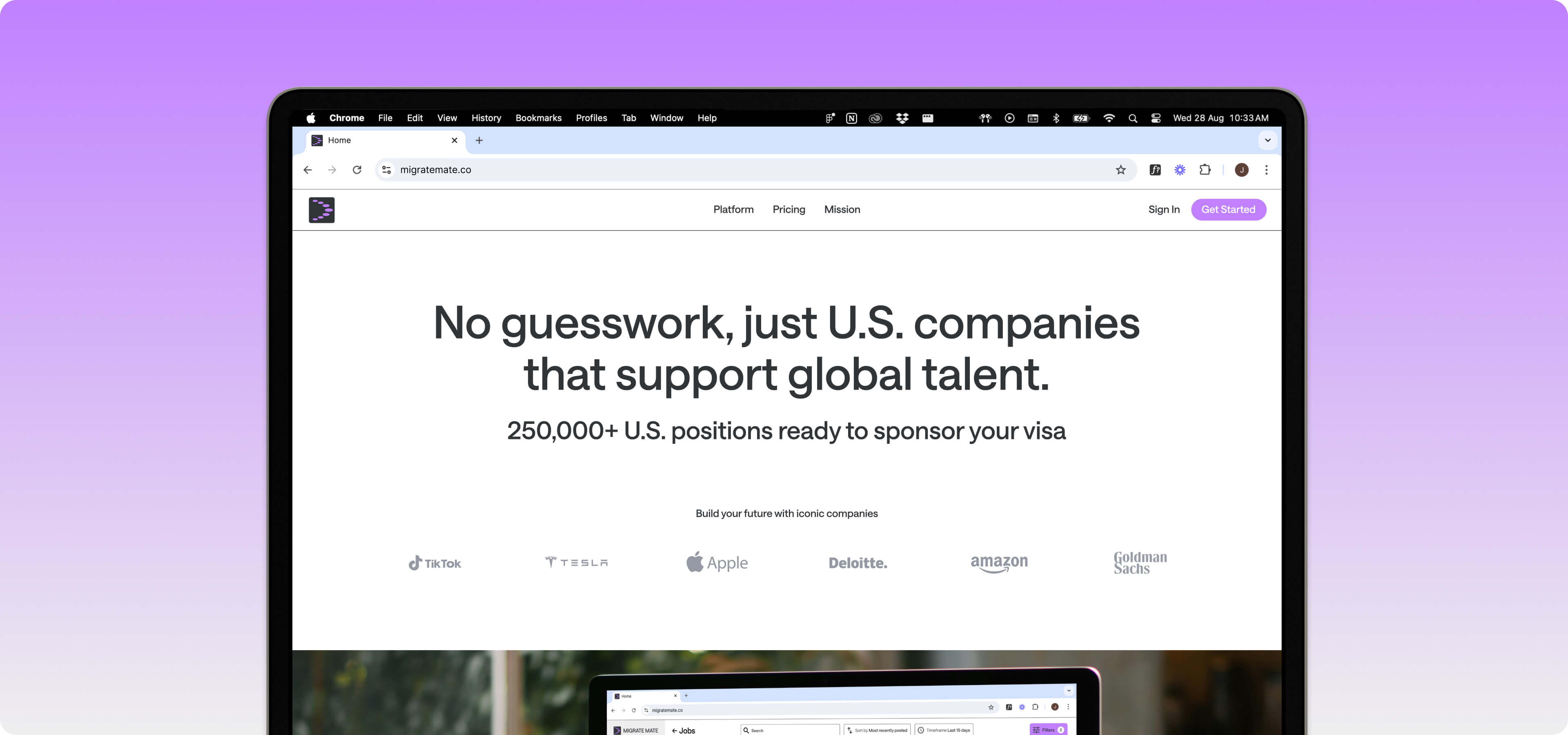
Migrate Mate
UX Audit: Building trust and reducing friction for international job seekers